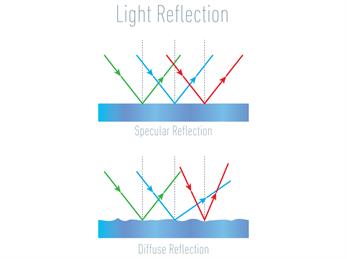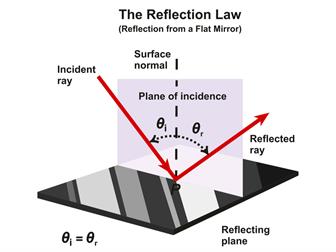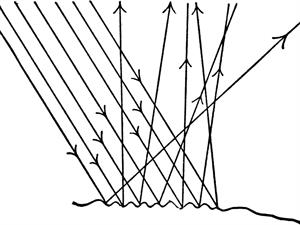
PUMPA - SMART LEARNING
எங்கள் ஆசிரியர்களுடன் 1-ஆன்-1 ஆலோசனை நேரத்தைப் பெறுங்கள். டாப்பர் ஆவதற்கு நாங்கள் பயிற்சி அளிப்போம்
Book Free DemoWe have known that not all bodies can reflect light rays. The amount of reflection of light depends on the nature of the reflecting surface of the body.
Reflection can be categorised into two types based on the nature of the surface,
Reflection can be categorised into two types based on the nature of the surface,
- Regular reflection and
- Irregular reflection

Regular reflection:
When a beam of light (collection of parallel rays) hits on a smooth or polished surface, it gets reflected. After reflection, the reflected rays will be parallel to each other.

Here, the angle of incidence () and the angle of reflection () of each ray will be equal.

Hence, the law of reflection is followed in this case, and thus, a clear image is formed. This reflection is called 'regular reflection' or 'specular reflection'.
Example: Reflection of light rays by a plane mirror and reflection of light from still water's surface.

Irregular reflection:
If the object has a rough or irregular(uneven) surface, each region of the surface is inclined at different angles. When light strikes on such a surface, the light rays are reflected at different angles. This is called irregular reflection.

In this case, the angle of incidence and the angle of reflection of each ray are may not be equal.
Hence, the law of reflection is not followed in this case, and thus the image is not clear. This type of reflection is called 'irregular reflection' or 'diffused reflection'.
Example: Reflection of light rays from a wall.

Reference:
1. https://pxhere.com/en/photo/1005872
2. https://pixabay.com/photos/trees-water-reflection-nature-3956633/
3. https://commons.wikimedia.org/wiki/File:Still_Water_At_Dusk.jpg